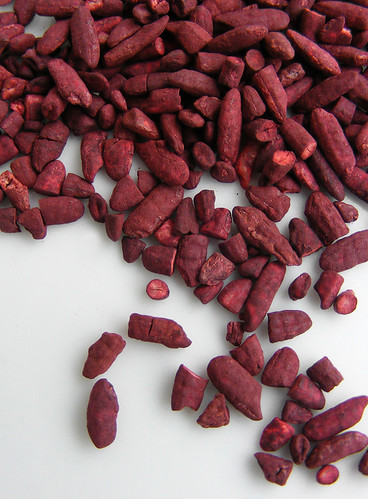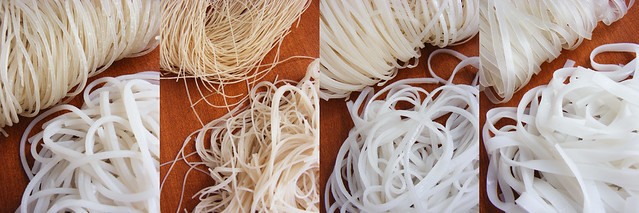 What’s it called?
What’s it called?
Red rice yeast / red yeast rice / red fermented rice / red rice koji / akakoji (EN), anka / ang-kak (Indonesia), hong-gug / 홍국 (Korea), hóng qú mǐ / hung kuk mai / 红曲米 (China)
What is it?
Red rice yeast is just normal, steamed, white rice which has been left to ferment for 4-6 dayes with the mold Monascus purpureus which colors the rice beautifully red.
How to use it?
Red rice yeast is often used as natural food coloring, e.g. in fermented tofu , red rice vinegar and sometimes also in Char Siu (red bbq pork), Peking duck and all kinds of red, Chinese pastry. Besides that it’s used to color some Chinese, Japanese and Korean rice wines pink. You can also just cook your red yeast rice like normal rice (1 cup rice : 1½-2 cups water, for 25 minutes) and eat it for supper, although I can’t recommoned that as it’s bitter and has a metallic taste to it. If kept airtight you can keep red rice yeast for several months.
Tips, tricks & recipes
- Also read the article about : Fuzhou red wine with step-by-step instructions to make this ricewine at home.
- Because some claim red rice yeast is very healthy you can buy concentrated red rice yeast in tablets at drugstores and pharmacist. It’s supposed to influence your cholesterol, bloodpressure and digestion.

